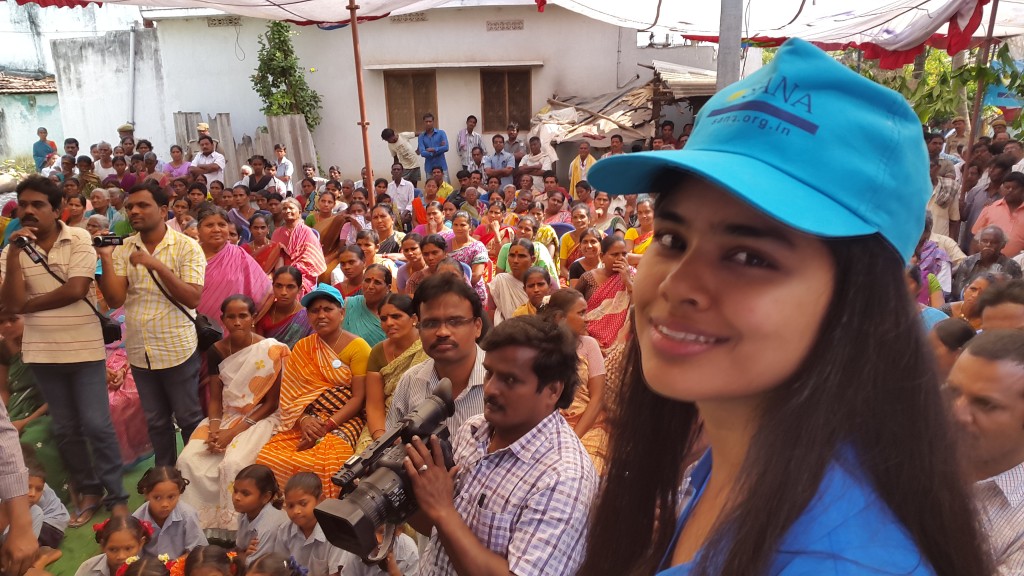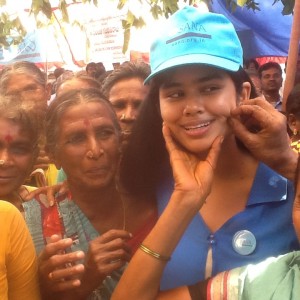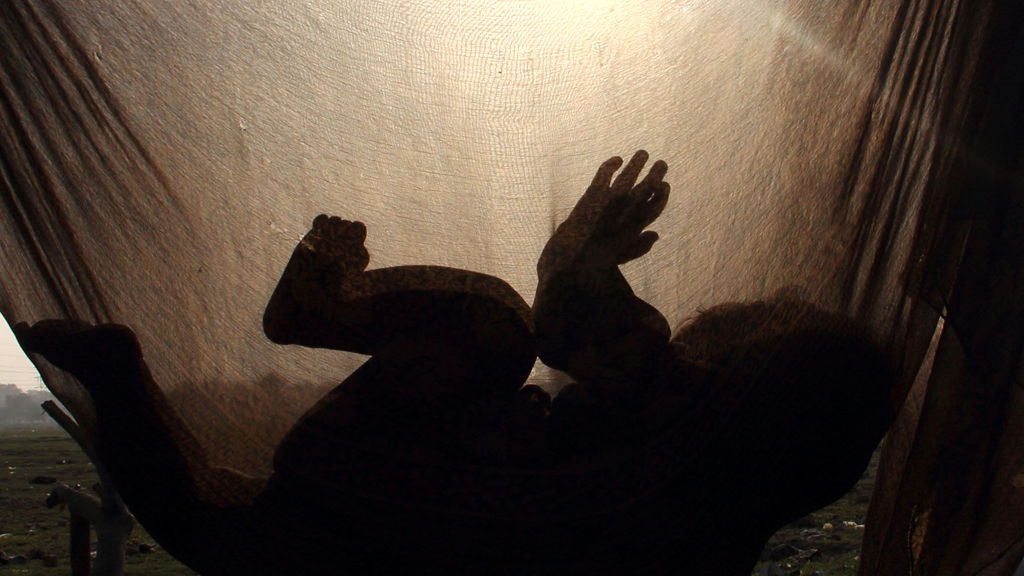A young woman’s revolution to bring clean water and bio-toilets in rural India
Sanchaita Gajapati Raju, a lawyer and media professional, chose to give up her life of luxury in 2011 when she set up her NGO, Social Awareness Newer Alternatives (SANA). The organization works tirelessly to provide access to clean water and sanitation facilities in over 20 villages in India. Roma Rajpal Weiß talked to the inspiring young woman about her journey.
Sanchaita is brimming with passion as she narrates her experience. “I was very young when I first travelled to the tribal regions of Andhra Pradesh and Vishakapatnam with my mother. The villagers would run to buy us a bottle of mineral water because they knew that the water they had access to was not good enough to serve to guests.”
That is when she first noted the lack of facilities in rural India. The villagers would offer their guests expensive bottled water while they had no access to clean water. The thought stayed with Sanchaita for many years. She went back to the capital New Delhi to get a degree in law and started her career as a media professional travelling and working with her father, a documentary filmmaker.
SANA’s birth
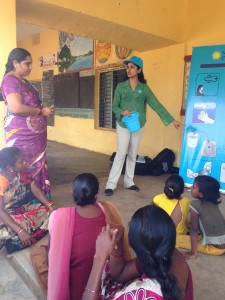 “I was a passive observer and I enjoyed working with media, travelling the world, meeting interesting people. It was a very interesting exposure for me, but somewhere deep inside I wanted more.” Sanchaita found her calling when she was accompanying her father in Gulbarga, a city in the Southern State of Karnataka. The film team was documenting agricultural intervention and the impact it had on people’s lives. Back in Delhi, with the support of her parents, SANA was born in June 2011.
“I was a passive observer and I enjoyed working with media, travelling the world, meeting interesting people. It was a very interesting exposure for me, but somewhere deep inside I wanted more.” Sanchaita found her calling when she was accompanying her father in Gulbarga, a city in the Southern State of Karnataka. The film team was documenting agricultural intervention and the impact it had on people’s lives. Back in Delhi, with the support of her parents, SANA was born in June 2011.
During her visits to rural Indian villages, Sanchaita realized that girls were dropping out of schools because they didn’t have access to safe sanitation. “The toilet becomes an issue when they start getting their periods and they have no access to clean sanitation facilities.” She also saw wage earners and laborers forced to skip work for days in a row because they were suffering from water-borne diseases. “In the case of the wage earners, not having access to clean water was directly affecting their income because they couldn’t go to work and as a result ended up in a debt cycle.” That’s what brought Sanchaita to believe that everything begins with water and sanitation. “I felt that this was the building block on which we could actually empower people to do anything in their lives.”
Tapping Solar Power
Sanchaita had seen firsthand the impact of technology in the form of agricultural interventions done in Gulbarga. So, she single-handedly got down to researching for sustainable alternatives to set up a water purification technology. “It was very easy for me to decide that solar power was the right way forward, because I had seen expensive equipment that had been installed with good intent in villages, and while the equipment was good, there was no way to use it because the people in the village had an erratic power supply and I didn’t want my equipment to lie around as junk.” She rolled up her sleeves and gathered 30,000 Euros as startup capital from friends and family. Some donations came in kind such as solar panels and water cans. With the help and support, Sanchaita launched her first project in a school in New Delhi. The project’s success motivated her to kick-off a similar project on
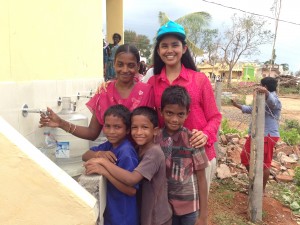
She realized that she needed to look at sanitation and water together to find a way of utilizing the waste water. © S. G. Raju
the East Godavari River in South India. But Sanchaita realized that a lot more needed to be done to ensure the optimum utilization of resources. “It was during this project that I learnt that what we were doing was only half a solution in a sense, because there was a huge amount of waste water that was being generated. For example, for every 5000 liters of clean water everyday, the purification process generated 2000 – 2500 liters of waste water.” Sanchaita wanted to make sure that she was not replacing one problem with another.
Bio-toilets
Sanchaita realized that she needed to look at sanitation and water together to find a way of utilizing the waste water. Inspired by a technology developed in the 90s by the Indian Ministry of Defense, SANA designed a Bio-Toilet, which did not need the intervention of humans to clean. In villages, where the caste-system continues to prevail, many from the upper castes refuse to do the job of cleaning toilets, which is reserved for the lowest caste – the Harijans, also known as the untouchables. Well aware of these socio-cultural issues SANA designed the Bio-Toilet and the model was one of the winners of the Google Global Impact Challenge in October 2013.
The grant of 30 million Indian rupees (432,524 Euros), SANA rolled out its first phase of Bio-Toilets. “The idea was to design a toilet where people felt that their dignity was intact, a design that looked nice, got enough light and air so it doesn’t feel stuffy when one is inside and because the sun is one of the best disinfectants in the world. Also, that the toilet has to have adequate lighting at night so women can feel safe. And most importantly there should always be water available enough for washing and for flushing.”
The Bio-Toilet has a tank that is installed underground and the human waste goes into that tank, and the innocuum of bacteria eats up the solid waste. “There are two by products that arise – biogas and water. That gas can be let out in the air or can be captured and used for cooking. At this point we are letting it out in the air. Water that comes out is ideal for agriculture so we let it out in the fields that are there, nearby. We use the waste water from the water purification for the flushing in these bio toilets.”
A collaborative partnership
Sanchaita is a bright young mind who has thought the whole thing through to the tiniest detail and she takes me by surprise when she remarks, “I do not do anything for free.” She believes that social initiatives only work when everybody in the community has a stake in it. “I don’t expect the villagers to invest money in the project, but the village Panchayat (local governing body) plays an important role as a partner. They give us access to a raw water source, a community building to house the water purification plant and the roof top to install solar panels and manpower such a local electrician and plumber.”
SANA has set up a system with women volunteers in villages that form the Water and Sanitation Committee which issue water cards to local families and charge a nominal fee for water. Sanchaita insists on this nominal fee because she wants the people to understand that clean drinking water is a precious commodity that cannot be wasted.
Author: Roma Rajpal-Weiß
Editor: Marjory Linardy
Roma Rajpal-Weiß is an Indian Blogger and Journalist and can be followed @romarajpal
WTO RECOMMENDS
Pushed to the margins
Imagine a society where some members are not allowed to speak to others, except from a distance of 100 meters, where generations of these ‘untouchables’ are banished to the village’s outskirts because they clean out the garbage and who are physically beaten up if they do not follow their community’s norms. (From June 26, 2013)
The ‘slaves’ in an Indian household
58-year-old Kaveri Ammal works as a domestic help in a neighborhood in Chennai in southern India. She leads a hard life, travelling 15 kilometers everyday to work in different neighborhoods and earning a
salary of about 2,500 Rupees or around 50 dollars every month. Her work usually involves washing the dishes, cleaning the laundry, ironing, sweeping and washing the floors. (From June 13, 2013)



